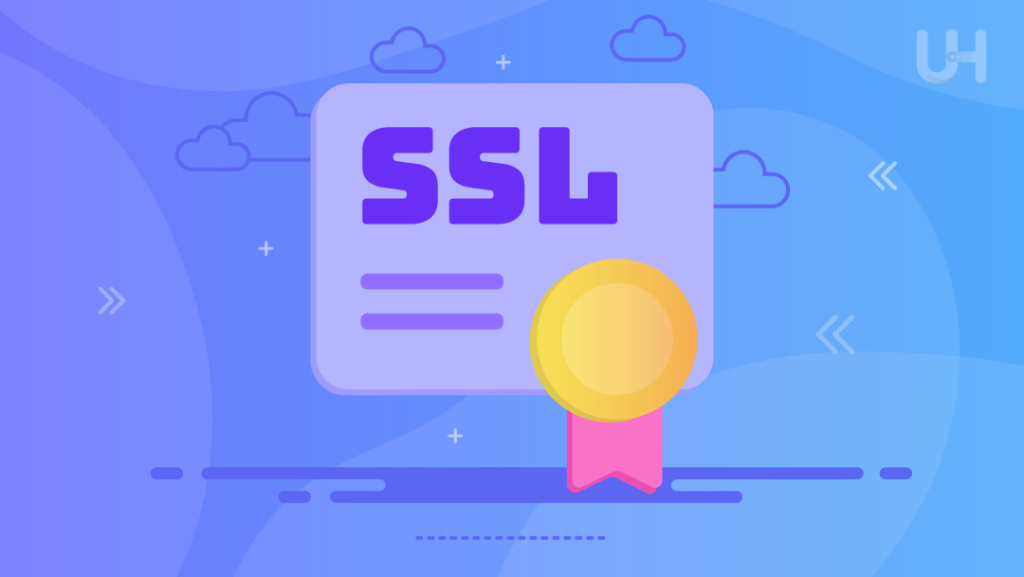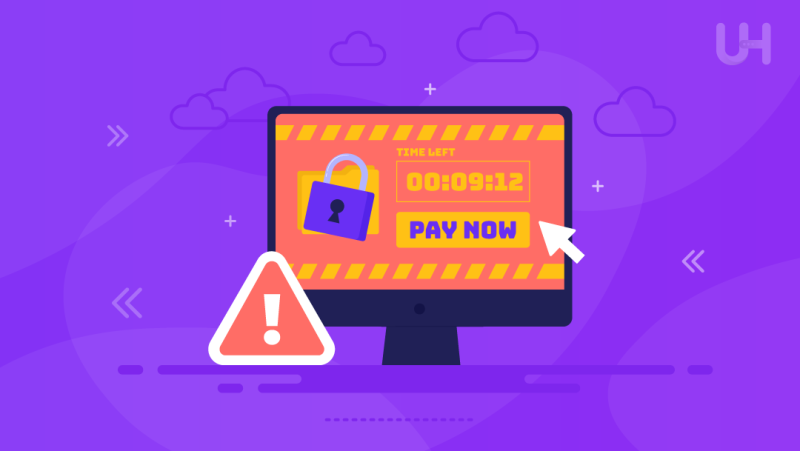With increasing digital interconnectivity comes looming cybersecurity threats; ransomware is probably one of the most insidious and costliest forms of attack. The need to understand ransomware is, therefore, growing as more and more businesses go online and people turn to online services, including shared hosting environments previously secured by SSL certificates.
In this blog post, we will explore what is ransomware attack, how does ransomware works, its nature, its impact, and how cybersecurity measures contribute to prevention.
What Is Ransomware?
Ransomware is malware that encrypts files or extorts a victim—or both—by locking them out of their system, then demanding ransom payments, usually cryptocurrency-denominated, for the decryption key or access to the system. This kind of digital extortion has evolved far from where it started and thus turned increasingly sophisticated and targeted over time.
There are different types of ransomware with there unique goals, but normal ransomware most commonly initiates its action using an infection vector, such as how the malware enters the system. Typical vectors include phishing e-mails, compromised websites, exploits of vulnerabilities in outdated software, etc.
Once inside, ransomware rapidly encrypts files and thereby makes them unavailable to the user. Then, there may appear the racket note with demands and conditions for payment.
The Evolution of Ransomware
Ransomware has certainly come a long way from where it started. The early variants were comparatively primitive, usually very weakly encrypted, and easily broken by cybersecurity experts. Today’s ransomware itself is dramatically different. Robust encryption algorithms mean that recovery without a decryption key is nearly impossible.
Modern ransomware attacks have also become more focused. Cybercriminals are now spender research on their potential victims to enable them to set up attacks against identified organizations or sectors. This approach, called “big game hunting,” allows attackers to demand higher ransoms from big entities who can afford to pay and will do so to avoid disruption.
Secure Website With Secure Hosting!
UltaHost offers fully managed Cloudflare VPS hosting with 24/7 unlimited support. This hosting service utilizes the Cloudflare Content Delivery Network (CDN) to enhance the security and speed of your website.
The Role of SSL Certificates in Cybersecurity

This is of relevance in setting the context: ransomware against the backdrop of a bromidic view of SSL certificates in the broad sphere of cybersecurity. SSL certificates are digital certificates that allow for the authentication of a website and enable encrypted connections. The “s” in “https://” stands for secure.
While SSL certificates might secure data privacy and data security in transit, they do not directly impact protection against ransomware infections. They are, however, integral parts of a security strategy. Since they ensure that all data being passed from a user’s browser to a site is encrypted, SSL certificates prevent man-in-the-middle attacks, which otherwise could be used to inject malware or steal sensitive information.
It should, however, be noted that ways to take advantage of the trust resolutions offered concerning SSL certificates have been discovered. Some ransomware delivery campaigns utilize compromised sites bearing valid SSL certificates to host malware or phishing pages.
This would allow taking advantage of users who are lured by those websites because they bear the “https://” prefix thus placing multiple layers of security over and above SSL. Additionally, you can utilize the domain SSL checker tool to Verify the presence of an SSL certificate on a website.
Ease of use and low prices make shared hosting solutions attractive to many small businesses and individuals. Shared server hosting allows multiple websites to coexist under one server, sharing things like processing power, RAM, and storage space. Although this model comes with several benefits, it also comes with some unique challenges related to protection against ransomware.
The primary shared hosting concerns are related to lateral movement: if one website in their shared server gets infected with ransomware, there may be unwanted malware spreading to other sites hosting on that server. This situation explains why proper isolation and security at the hosting provider’s end become very important.
Besides, a significant percentage of shared hosting users have less control over the security configuration at the server level. This may make it a bit challenging to enforce some high-end security measures that will leave the website or websites in question open to ransomware attacks.
That said, quality hosts do offer quite enough features on security, which include frequent server backup and ransomware recovery, malware scanning, and firewalls to mitigate such risks.
Preventing Ransomware Attacks
Protection against ransomware assumes many dimensions: technical measures, user education, and robust policies. The following are some key strategies for its prevention:
- Regular Software Updates: Keeping all software current means keeping operating systems, web applications, and plugins compliant. Most ransomware attacks leverage known vulnerabilities of outdated software.
- Email Security: Because the vector of entry in many ransomware cases is a phishing email, good email filtering with an email header and user education on identifying suspicious mail are very important.
- Off-Site Backup Strategy: Regular backups will save one’s life in case of a ransomware attack. Backups should be kept independent of a leading network, and the restoration process must be tested regularly.
- Access Control: Implement the principle of least privilege to ensure that users have access only to information and resources their roles require. This can help, in case of infection, to contain the propagation of ransomware.
- Network segmentation: It means dividing an extensive network into small, isolated segments. This may easily block the diffusion path of ransomware and reduce damage to critical assets.
- Security Awareness Training: This has sensitized the employees on the risk of ransomware and the best practices in cybersecurity to avoid successful attacks.
The Impact of Ransomware
If it comes to a ransomware attack, the consequences are unbearable. Besides probable money loss, many have to bear significant downtime, data privacy loss, and reputational damage. For businesses, this may mean lost revenue, customer trust, and competitive advantage.
Moreover, the impact of ransomware does not stop at a human level but extends to other victims. The attacks can hit vital infrastructure, as evident to various observers by its cases across hospitals, government agencies, and energy companies. Globally, ransomware is expected to have a massive economic cost, running into billions of dollars yearly.
The Future of Ransomware
In a case where cybersecurity measures against ransomware are improving, similarly, ransomware tactics are increasingly evolving. We can see more instances of double extortion where, besides ensuring data security, they could also threaten to leak information that may be sensitive in nature.
One of the fastest-growing phenomena is RaaS: Ransomware as a Service. The idea here is that since the ransomware tools and services are now sold or rented to less-skilled criminals, this would mean increased proliferation in attacks.
Cyber criminals and cyber defenders symmetrically use artificial intelligence and machine learning. Attackers also use these technologies to create advanced, evasive malware, even though they can make ransomware detection and prevention more efficient.
Conclusion
Ransomware is, therefore, one of the biggest threats to our digital world and can seriously disrupt activities or cause financial loss. Website owners already deploy technologies like SSL certificates for general security; however, this is not enough. You must understand the unique risks and take proper precautions in shared hosting solutions.
Eventually, protection from ransomware will require an all-rounded approach comprising technical measures, user education, and rigorous policies. If users keep themselves up to date concerning the moving landscape of threats apply best practices of cybersecurity and choose a web host with advanced server-side ransomware protection, then individuals and companies can significantly reduce their risk of becoming the next ransomware victim.
If you have a WordPress website and want to secure it from ransomware, consider UltaHost’s WordPress Hosting Secure. Take advantage of UltaHost’s most secure WordPress servers, and rest easy knowing that our WordPress security is active 24/7/365 and protecting your site from DDoS attacks, malicious traffic & malware.
FAQ
What is ransomware?
Ransomware encrypts files on the victim’s computer or restricts access to them and demands money, usually in cryptocurrency, for decryption or access.
How does ransomware infect computers?
Ransomware, in particular, spreads to computers through channels such as phishing emails, infected websites, and exploits that take advantage of vulnerabilities in old, unpatched software.
What are SSL certificates, and can they protect you from ransomware?
SSL certificates encrypt data between users’ browsers and the website, protecting it from interception. However, although they do not prevent ransomware since they secure online transactions.
Is it possible for ransomware to infect shared hosting solutions?
Shared hosting can carry ransomware risks due to shared resources. If a hacker compromises any of the sites on that shared server, ransomware could spread to all the other websites.
How can you prevent ransomware attacks in a business?
To evade ransomware, regularly update software, apply security measures like email filters and user education, perform off-site backups, and implement access control policies.








